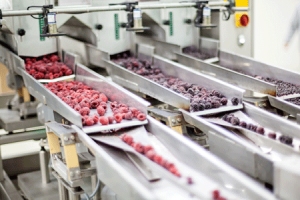 The United States FDA has recently presented a challenge intended to drive creativity in development towards affordable food traceability software that is affordable for the smaller food manufacturers, primary producers, importers, distributors, and retailers. This is a step to advance their agenda set out in July 2020 “New Era of Food Safety Blueprint” aimed at uncovering cost-effective traceability models.
The United States FDA has recently presented a challenge intended to drive creativity in development towards affordable food traceability software that is affordable for the smaller food manufacturers, primary producers, importers, distributors, and retailers. This is a step to advance their agenda set out in July 2020 “New Era of Food Safety Blueprint” aimed at uncovering cost-effective traceability models.
Submissions will be accepted through July 30 and reviewed by a panel of judges from the federal government with experience in the fields of technology, public health, or the food industry. Twelve winners will be announced at the conclusion.
Currently, most enterprise level inventory software comes with a hefty price tag, takes months to set up and comes with loads of features a smaller business doesn’t need. SOS Inventory is one of the few offering this feature in their software at a price SMBs can afford.
Food traceability is important for food products to allow the manufacturer to track down raw materials that may have been tainted. If a particular supplier’s raw materials were contaminated, the manufacturer will need to identify which groups of products were made with those raw materials to recall them or destroy them.
The faster his ability to track down the affected food, the less money lost and the less product that need to be recalled. If he can narrow down the impacted goods to the day, they were used rather than recall an entire month’s worth of products, the savings can reach millions of dollars.
By removing contaminated food as quickly as possible, the risk of sickness caused by those food-borne illnesses is minimized. Both the health of the public and the livelihood of the business owner are at stake while spoiled products remain in circulation. And if an individual or group decides to sue the manufacturer, the company’s survival is on the line.
Tracking Food Items
The simplest way to track the journey of an individual raw material is with barcode tracking. As products arrive from the supplier, they are labeled with a barcode indicating the product name, supplier, date of arrival, expiration date and any other pertinent information about that product.
All the same raw materials that arrived from the same supplier with the same expiration date should have the same lot number. That lot number gives the business to keep track of that raw material no matter where it goes in production and long after it is sent to the customer.
If a food item was made with a spoiled food product, the finished product can be tracked down by lot number to the distributor, wholesaler or retail outlet and quickly recalled.
Tracking is already a requirement by the FDA and other local government agencies. Having to manage lots and expiration dates on paper is near impossible and makes providing reports to those agencies an overwhelming task. Only with software tracking every movement of the raw products can the business know where to find every trace of contaminated food.
The future of food manufacturing is all about data, transparency, and accountability to the customer.
Shift Frequency © 2021 – Making Food Traceability Easier
